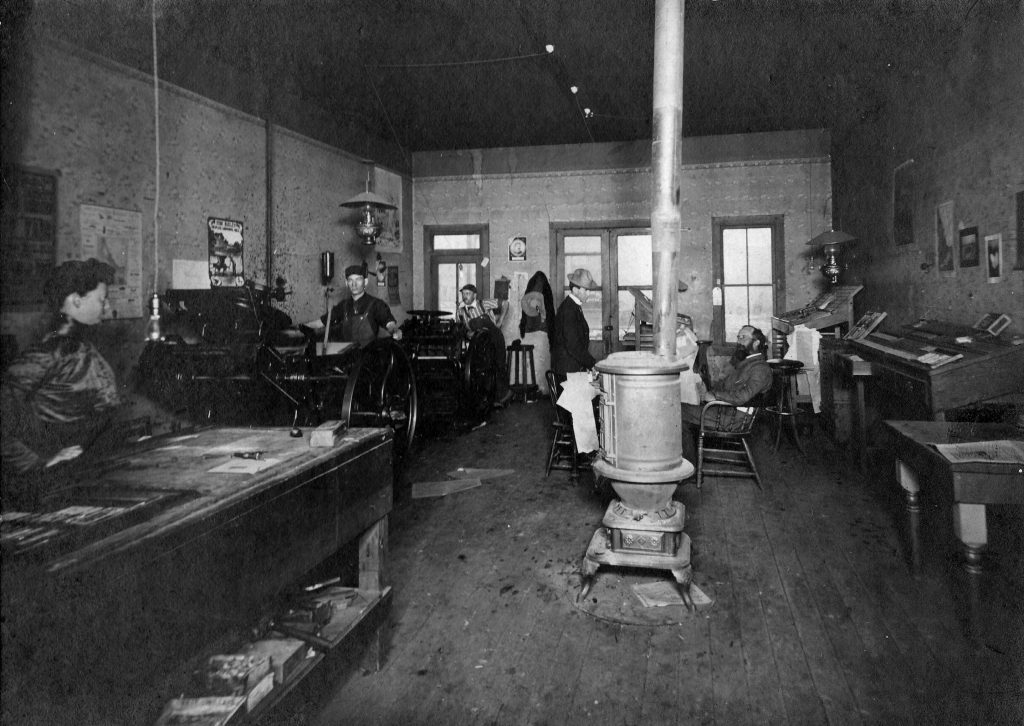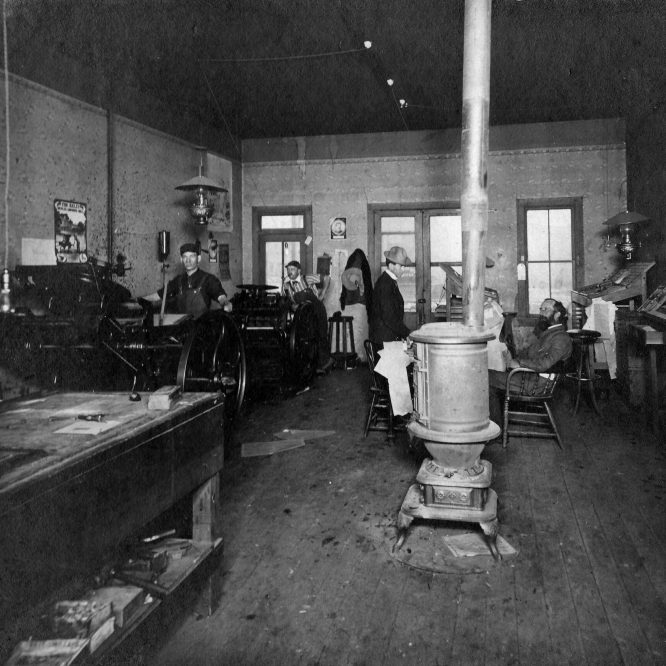
Volume 3, Issue 11
This image shows the interior of a newspaper printing office in Albion. Although the photograph does not indicate which newspaper outfit we are looking at, based on available evidence this is likely the interior of the Orleans Republican taken sometime around 1910 or 1915. If that is the case, the man standing in the center of the room is probably Sanford T. Church and the man seated is W. Crawford Ramsdale.
The Orleans Republican was established in June of 1828 by Cephas McConnell, the same year that the Village of Albion was incorporated. Due to its age, it was regarded as the pioneer publication of the area with the Orleans American as the only newspaper printing business with an older lineage (dating back to 1823). The business was sold to J. O. Willsea of Albion in 1848, who brought Calvin Gilbert Beach of Rochester in to assist in its operation starting in 1850.
The business eventually transitioned to Beach upon Willsea’s retirement and operated under Beach’s ownership until his untimely death in 1868. Not wishing to sell the business, his widow Juliette Beach ran the printing outfit until the two sons were old enough to engage in the operation. After the death of their mother, Lafayette took control of the business and Frederick moved to Rochester where he associated with the Rochester Democrat and Chronicle.
Lafayette retained ownership until his retirement in 1909 when he sold the business to Sanford T. Church and W. Crawford Ramsdale, two Albion attorneys. In the earliest days of operation, the printing equipment was housed on the 3rd floor of 13-15 East Bank Street and remained there until Church and Ramsdale took over; the business was eventually relocated to the first floor sometime around 1915. We can tell from this image that the room is situated on the first floor given the visible features outside of the front door and windows.
The two large presses located along the left wall were used to print the weekly paper, which peaked in the early portion of the 20th century at over 2,000 subscriptions. Given the nature of the printing process, the majority of area papers at the time were weekly runs due to the amount of time associated with setting the type. Along the right wall there are a number of cases filled with types used in the typesetting process.
The letterpress method of printing, where type is locked into a chase that is used for pressing ink onto paper, was the standard printing method from its development by Johannes Gutenberg during the 15th century up until the development of offset printing in the 20th century. The woman standing to the left was likely responsible for setting the type, which was done upside down and backwards – a time-consuming and tedious process that required a great deal of precision.
Once the chase was set, it was given to the men situated at one of the two presses for printing. Both men wear long aprons to prevent ink from staining their clothing. In this picture, the men are wearing long-sleeved shirts and have opted to roll the sleeves up. Some printers would wear coverings over their arms to prevent ink from damaging clothing or staining their skin.
As a side note, the municipal park on State Street in Albion is named in memory of Lafayette Beach. Today we refer to it as Lafayette Park, even though Lafayette Beach Park or simply Beach Park would be the more appropriate name.

